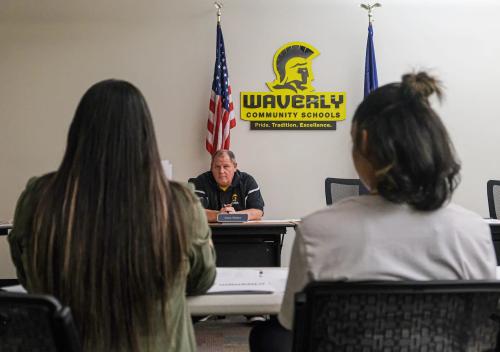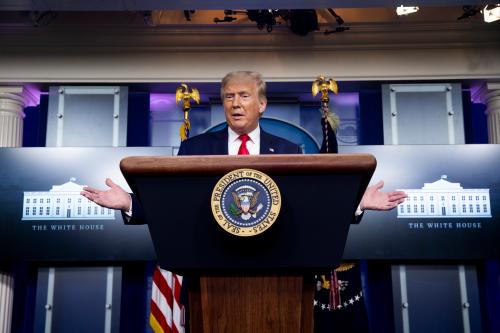Since Donald Trump’s election, there has been a great deal of media speculation about the future of the U.S. Department of Education’s Office for Civil Rights (OCR), an agency tasked with fighting discrimination on the basis of race, color, national origin, sex, age, and disability in federally assisted education programs. The overwhelming majority of OCR’s work involves investigating and resolving discrimination complaints against educational institutions. OCR also issues policy guidance, provides technical assistance, publishes civil rights data, and responds to requests for information.
Much of the speculation about OCR’s future has centered on whether the new administration will walk back certain policy guidance documents issued during the Obama years. I will leave that issue for another day, and instead focus on areas of what I hope are common ground. As the new administration gets started, let me suggest two areas in which all sides should be able to agree that our educational institutions could use additional guidance because they are emerging areas of law. I also suggest a third area that must continue so that the pursuit of equity under the Every Student Succeeds Act (ESSA) can become a reality.
Provide schools and colleges with the tools to combat cyberbullying
With a phone increasingly becoming a part of every student’s backpack, it is incumbent upon the Trump administration to provide schools, colleges, and universities with guidelines about their responsibilities in this rapidly emerging area. According to Department of Education data, nearly 7 percent of students ages 12-18 reported being cyberbullied during the 2012-13 school year. That amounts to over 2 million students per year who have to endure this behavior. There is no question that cyberbullying can have a negative effect on academic performance, and the news has shown examples of far more tragic consequences.
I was heartened to hear that cyberbullying is among the issues the first lady hopes to address. Developing this guidance will undoubtedly raise difficult questions about the scope of students’ First Amendment rights, as well as the legal obligations of educational institutions in addressing conduct that may have begun off school grounds. But there is no doubt this issue is here to stay, and OCR is well positioned to address it. OCR’s career staff have literally decades of experience addressing instances of bullying and how it has evolved over the years. Aside from describing an institution’s legal responsibilities, OCR can provide examples of best practices and disseminate relevant research to state and local education agencies.
Ensure emerging technology is accessible to students with disabilities
The degree to which technology pervades our classrooms seemingly increases by the day. There is certainly a robust debate about whether our increasing reliance on technology actually improves academic performance or helps our students think more critically. There is no debate, however, that students with disabilities, such as print disabilities, have no chance of benefiting from these advances if the technology is not accessible to them. In 2015, for example, over 450,000 school-age children had a vision disability in the United States.
The Obama administration, including OCR, took many steps to ensure that students with disabilities have equal access to educational programs and services. These steps included issuing guidance on how educational institutions can ensure their electronic information, such as websites, are accessible to students with disabilities, and reaching resolution agreements with a number of school districts and colleges that did not have accessible information.
The Trump administration should continue these efforts, as technology will keep evolving at a breakneck pace. The most comprehensive OCR guidance on this topic was issued in 2011. At that time, electronic book readers were still considered a type of emerging technology; today, my kids use their electronic book readers as paperweights. Google Hangouts had not even burst onto the scene, and Pinterest was just in its infancy. The government should do its best to keep up with these changes so that “equal access” is not just a legal buzzword, but also a practical reality.
Promote transparency by continuing the Civil Rights Data Collection
The Civil Rights Data Collection (CRDC) is a biennial survey of public schools that examines barriers to educational opportunity, and has been around since before the Department of Education became its own federal agency. The CRDC has been a sleeping giant for many of these years, until the Obama administration overhauled it and made the results much more publicly accessible. The results have been dramatic, as now everyone has the tools on their desktop (or phone) to see how their school, district, or state is doing in its pursuit of equity.
Admittedly, the CRDC has not been free of controversy, as some school districts have complained that the collection is too burdensome. Those complaints, which were relatively few to begin with, have lessened over time as the collection has become institutionalized–so much so that important parts of the CRDC have become a part of ESSA. For instance, the state and school district report cards required by ESSA must include data that’s already collected by the CRDC, such as rates of in-school suspensions, referrals to law enforcement, instances of bullying and harassment, number of students enrolled in accelerated coursework, number of inexperienced teachers, and per-pupil expenditures.
The CRDC data, such as those listed above, provide a critical window into how ESSA is playing out around the country and how the law’s implementation is affecting our most vulnerable students. Fortunately, new Secretary of Education Betsy Devos’s answers to questions from Sen. Elizabeth Warren (D-Mass.) during her confirmation hearing last month indicate that she will continue it.
Serving every student
Also during that hearing, DeVos affirmed her commitment for every student in America to be in a safe environment free from discrimination. The suggestions above provide her with immediate opportunities where the OCR’s work can continue to demonstrate that commitment.






Commentary
Finding common ground for the Department of Education’s Office for Civil Rights
February 8, 2017